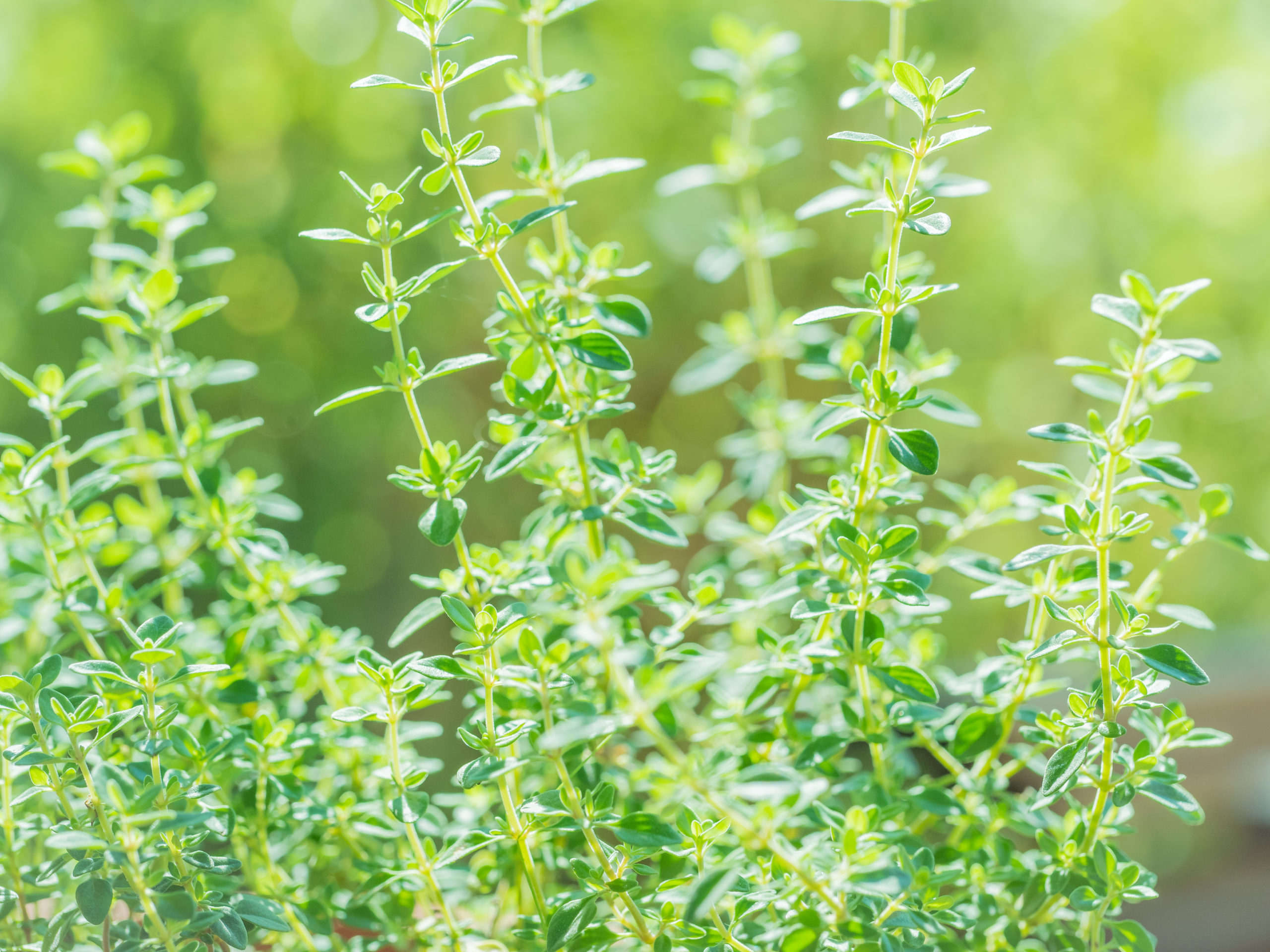
origin/ latin name
Thyme (/taɪm/) is the herb (dried aerial parts) of some members of the genus Thymus of aromatic perennial evergreen herbs in the mint family Lamiaceae. Thymes are relatives of the oregano genus Origanum. They have culinary, medicinal, and ornamental uses, and the species most commonly cultivated and used for culinary purposes is Thymus vulgaris.
Thyme is indigenous to the Mediterranean region[1] Wild thyme grows in the Levant, where it might have been first cultivated. Ancient Egyptians used thyme for embalming.[2] The ancient Greeks used it in their baths and burnt it as incense in their temples, believing it was a source of courage. The spread of thyme throughout Europe was thought to be due to the Romans, as they used it to purify their rooms and to “give an aromatic flavour to cheese and liqueurs”.[3] In the European Middle Ages, the herb was placed beneath pillows to aid sleep and ward off nightmares.[4] In this period, women also often gave knights and warriors gifts that included thyme leaves, as it was believed to bring courage to the bearer. Thyme was also used as incense and placed on coffins during funerals, as it was supposed to assure passage into the next life.[5]
Culinary uses
Thyme is sold both fresh and dried. Fresh thyme is commonly sold in bunches of sprigs. A sprig is a single stem snipped from the plant. It is composed of a woody stem with paired leaf or flower clusters
Medicinal uses
Oil of thyme, the essential oil of common thyme (Thymus vulgaris), contains 20–54% thymol.[11] Thyme essential oil also contains a range of additional compounds, such as p-cymene, myrcene, borneol, and linalool.[12] Thymol, an antiseptic, is an active ingredient in various commercially produced mouthwashes such as Listerine.[13] Before the advent of modern antibiotics, oil of thyme was used to medicate bandages.[3] Thymol is one of a naturally occurring class of compounds known as biocides.
There has been research proving thyme to aid in high blood pressure/ hypertension. hyme oil, even at low concentrations, showed potential as a natural preservative of food products against several common foodborne bacteria that cause human illness, along with being correlated with lowered rates of certain cancers, yeast infections, and skin problems such as acne.
These are substances that can destroy harmful organisms, such as infectious bacteria.
Used alongside other biocides, such as carvacrol, thyme has strong antimicrobial properties.
Thyme is thought to have antibacterial, insecticidal, and possibly antifungal properties.
Recipes:
- Thyme Dessert Recipe – https://www.justapinch.com/recipes/dessert/cookies/thyme-uses-and-three-recipes.html
- Thyme Recipes – https://www.acouplecooks.com/thyme-recipes/
- Thyme Dinner Recipes – https://www.brit.co/thyme-dinner-recipes/
